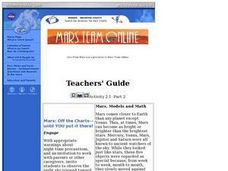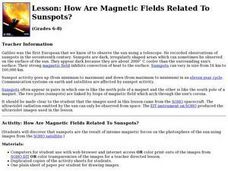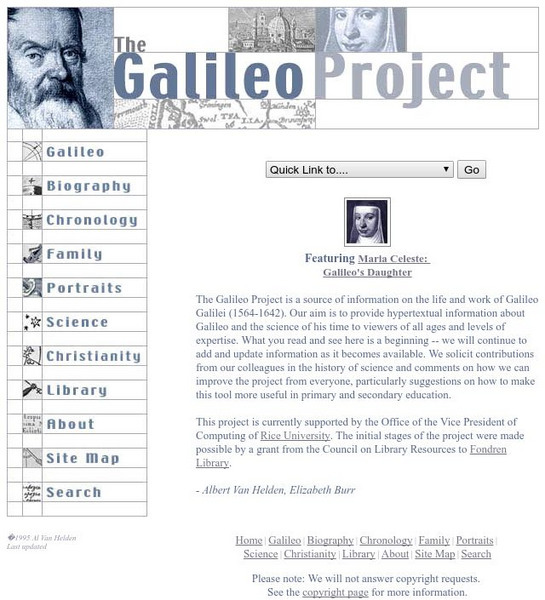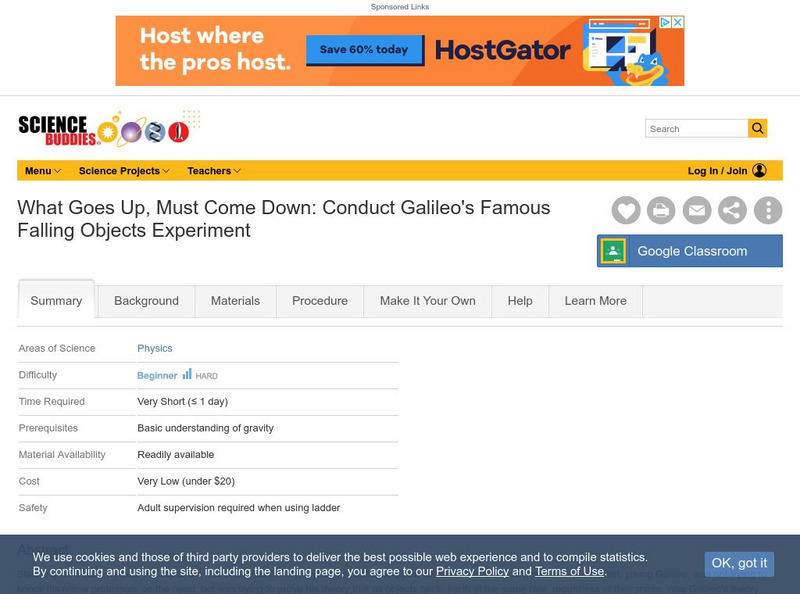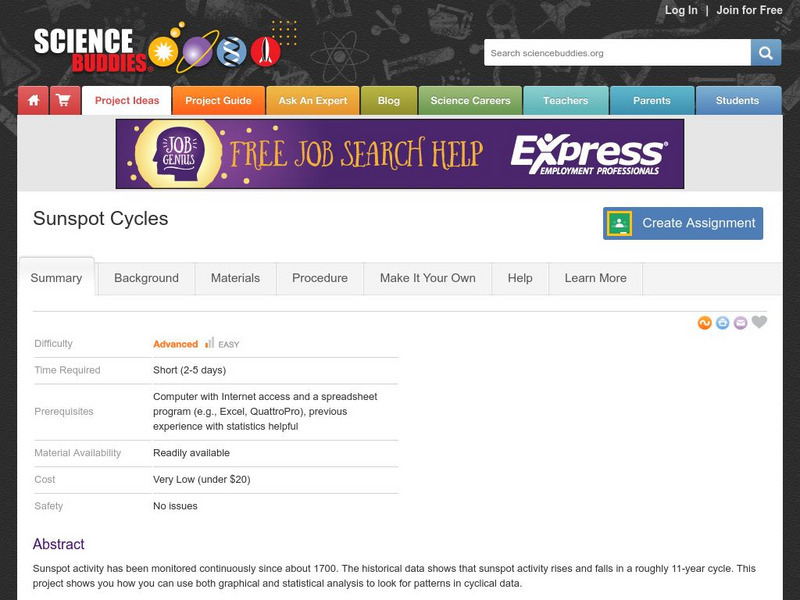Curated OER
The Search for Extraterrestrial Life
In this extraterrestrial life worksheet, students review the different space craft used to explore space for existence of life beyond Earth. This worksheet has 8 matching and 5 unscramble words.
Curated OER
Compiling and Weighing Evidence
In this evidence worksheet, learners read about how scientific theories are developed and how evidence is gathered to support the theory. This worksheet has 2 graphic organizers and 2 short answer questions.
Curated OER
Telescopes Then And Now
In this telescopes activity, learners will read information about the differences between the early telescopes and the modern telescopes. Then students will complete 2 short answer questions.
Curated OER
History of Astronomy
Young scholars participate in assessments regarding the history of astronomy. They listen and take notes, draw a time line, draw a solar sytem designed by Ptolemy and create flashcards. They write an essay on Galileo, watch a video,...
Curated OER
Swinging on a String
Students explore how pendulums work and why they are useful in everyday applications. In a hands-on activity, they experiment with string length, pendulum weight and angle of release.
Curated OER
Mars: Off the Charts--Until You Put It There
Students explore the night sky and make illustrations which are shared in class the next day. Distinctions are made between the stars and the planets and views of the constellations for the season are made available. The work of early...
Curated OER
How Are Magnetic Fields Related To Sunspots?
Young scholars discover that sunspots are the result of intense magnetic forces on the photosphere of the sun by observing images from the SOHO satellite.
PBS
Pbs Learning Media: The Beginnings of the Telescope
This animated essay from the NOVA Web site examines the design of Galileo's refracting telescope and Sir Isaac Newton's reflecting telescope.
PBS
Pbs Learning Media: Galileo: His Experiments
This interactive activity from the NOVA Web site samples Galileo's experiments with falling objects, projectiles, inclined planes, and pendulums.
University of Missouri
Famous Trials: The Trial of Galileo
An account of the trial of Galileo, who was brought before the Roman Inquisition in the early 1600s.
Rice University
Galileo Project: The Galileo Project
Rice University offers an impressive online project about Galileo Galilei, his life and work. Includes a glossary of terms, a timeline, maps, pictures, primary texts, family letters, and sketches.
Story Behind the Science
Story Behind the Science: Pendulum Motion, Time, and Shape of Earth [Pdf]
Article outlining the scientific history behind the evolution of theories about measuring time based on the movement of a pendulum, and about how gravity would impact a pendulum's movement depending on one's proximity to the Earth's...
Story Behind the Science
Story Behind the Science: Pendulum Motion [Pdf]
The history of the pendulum and its importance both in timekeeping, and in how timekeeping was used to solve other problems, such as determining longitude on a map.
TED Talks
Ted: Ted Ed: The Story Behind Your Glasses
Video describes the developments and advancements in the history of the study of optics. [4:17] Includes a short quiz and a list of additional resources to explore.
Science Buddies
Science Buddies: What Goes Up, Must Come Down
Standing on a balcony near the top of the 179-foot tall Tower of Pisa, a young scientist dropped two iron balls into the crowd below. The scientist, young Galileo, was not trying to knock his fellow professors on the head, but was trying...
Science Buddies
Science Buddies: Sunspot Cycles
Sunspot activity has been monitored continuously since about 1700. The historical data shows that sunspot activity rises and falls in a roughly 11-year cycle. This project shows you how you can use both graphical and statistical analysis...
South Carolina Educational Television
Etv: The Hobby Shop: Balloon Blast
Design a catapult, blast a balloon into the air, and try to hit the target the first time. If you miss, adjust the velocity and angle to reach the desired trajectory.
University of Colorado
University of Colorado: Physics 2000: Speed of Light
Using an interesting and intriguing format, this page discusses the question of "How does one measure the speed of light." Explanation focuses on Galileo's and Roemer's efforts to obtain a reasonable value. Also discusses Heinrich...
PBS
Pbs: Medici, Godfathers of the Renaissance
Learn about the Renaissance period and its cultural leaders, the Medici family. Take an interactive tour of Florence and use the interactive timeline to understand the course of the Renaissance through the centuries. Uses popups.
Vision Learning
Visionlearning: An Experiment: Acceleration During Free Fall
Animated simulation re-enacts Galileo's experiment of dropping objects off the Leaning Tower of Pisa.
NASA
Nasa: Astronomy Picture of the Day:galileo Probe
This image, taken before Galileo left Earth in 1989, was chosen for December 7, 1995, the day that the probe entered Jupiter's Atmosphere.
Smithsonian Institution
National Air and Space Museum: Exploring the Planets: Early Discovery
This section of the exhibition gives the history of the discovery and study of space starting with the Greeks and Romans through to the early 1900's.
NASA
Nasa Space Science Data Archive: Ice on Europa
With the exception of Earth, Europa currently appears to be the only body in the solar system which potentially harbors a global ocean of liquid water. The possibility of liquid water raises the possibility of life, as well. This NASA...
NASA
Nasa Space Science Data Archive: Photo Gallery: Galileo
A well-indexed collection of NASA images taken by the Galileo spacecraft. Images include the spacecraft itself prior to launch and all of the solar system objects this incredible mission has visited.







